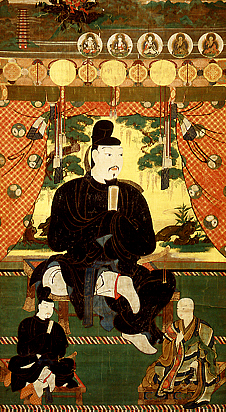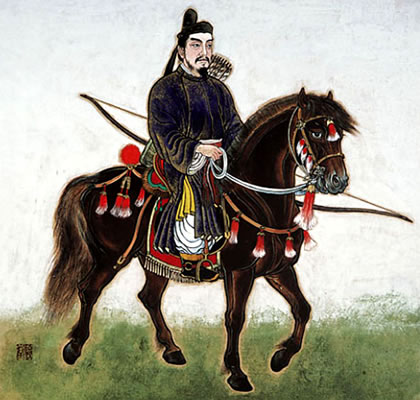 |
| Taika Reforms |
The reforms that were made in the years following 645 were thus called the Taika Reforms. They continued and accelerated the adoption of Chinese institutions begun by Prince Shotoku Taishi.
Prince Shotoku died in 622, followed by Empress Suiko, who died in 628. A succession dispute followed because of resentment of the Soga clan by rival clans.
It culminated in a coup d’etat in 645 led by a prince who became Emperor Tenchi (Tenji) (r. 668–671) and a nobleman, who was given a new family name as reward for his services to Tenchi. That family name was Fujiwara and the nobleman, Fujiwara Kamatari, became the progenitor of the Fujiwara clan that would dominate Japanese politics for many centuries.
Tenchi and Kamatari began a new wave of reforms based on the Chinese model. They had the advantage of many students sent to study in China earlier who had returned with newly gained knowledge.
  |
Five more embassies were sent to China between 653 and 669. The China specialists were appointed as state scholars. The first reforms were aimed at strengthening the government’s control over the provinces and instituting ing a Chinese-style centralized taxation system.
A census was taken. Adopting the Chinese concept that all land belonged to the throne, a land survey was made by imperial messengers to facilitate the collection of taxes. It started with areas around the capital city, later fanning out to outlying areas.
A first attempt was made to establish a Chinese style capital city at Naniwa (near present-day Osaka) where central government ministries were set up. The ministries and officials all had names and ranks fashioned after those of China. A law code copied from the Chinese code of the Tang (T’ang) dynasty was promulgated.
 |
| Fujiwara Kamatari |
The Taika Reforms were a very ambitious attempt to introduce the highly advanced system of government in China to Japan, where conditions were more primitive. Many of the new concepts could not be realized and compromises had to be struck.
For example, the emperor did not have the power to deprive the clan chiefs of their land, nor to appoint all local officials. In reality the clan chiefs and local magnates were given official posts and ranks that confirmed them in control of their traditional landholdings.
Shotoku had begun a wave of reforms patterned after Chinese concepts and institutions. Tenchi followed in his footsteps and expanded upon them and his successors continued, making pragmatic compromises as Japanese conditions demanded.
All the reforms were synthesized into law as the Taiho Code, which went into effect in 702. Thus the Taika Reforms were an important step in Japan’s absorption of Chinese culture.